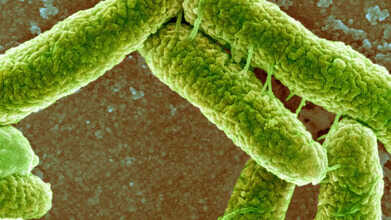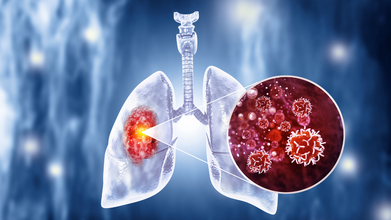- Health Conditions A-Z
- Health & Wellness
- Nutrition
- Fitness
- Health News
- Ayurveda
- Videos
- Medicine A-Z
- Parenting
How Can You Tell If Your Metabolism Is Slowing Down?

Metabolism plays a big role in our health, it’s not just about helping your digestive system work smoothly, but the way your body breaks down the food and helps nutrients get absorbed into the body that matters. But often due to one reason or the other, your metabolism can slow down, which then causes issues with people. Many people think that the reason they may be gaining weight could be because of their poor metabolism, so how does one go about fixing this issue and how do you even know that the fault lies with your metabolism.
To understand why your metabolism may be slowing down, we must understand what role it exactly plays. Metabolism is the process your body uses to turn food into energy. It's essential for everything from breathing and digestion to keeping you warm. Several things affect how fast your metabolism works, including your genes, health, and lifestyle. A slow metabolism means your body burns fewer calories, which can lead to tiredness, dry skin, weight gain, and cravings.
Why Does Your Metabolism Slow Down?
There can be many reasons why your metabolism may be slowing down. You inherit some of it, and it tends to slow down as you age, often due to changes in your body and less muscle. Men and women have different metabolisms because of body size, makeup, and hormones. What you eat matters too – not enough healthy food or a very low-calorie or high-fat diet can slow it down. A lazy lifestyle, lack of sleep, and stress can also make your metabolism sluggish. Certain health problems like diabetes or an underactive thyroid, and even environmental factors, may also play a role.
Signs You Need To Improve Your Metabolism
While these are some common signs, it is best to visit a healthcare professional and ask for their opinions before you try a solution. There are many underlying reasons as to why you are experiencing slow metabolism, it can also be a side-effect of some medicine. A healthy lifestyle goes a long way, especially for people who already have digestive issues, kidney or even mental health issues like stress and anxiety.
Constant Fatigue
Feeling tired all the time, even without a good reason, could mean your metabolism is slow. A slow metabolism means your body breaks down food into energy slowly, leaving you with low energy levels. You might feel sluggish or get tired easily throughout the day. Changes in what you eat or your body composition (how much fat and muscle you have) can also make you feel more tired.
Dry Skin
Dry skin is common in winter, but if you have it all the time, it could be a sign of a slow metabolism. Thyroid hormones help control your metabolism and also keep your skin hydrated. If your thyroid isn't working right and your metabolism is slow, your skin might get very dry.
Weight Gain
If you're eating healthy and exercising but still gaining weight, a slow metabolism could be the problem. A slow metabolism doesn't turn food into energy quickly, so you burn fewer calories. Extra calories are stored as fat, making it hard to lose weight.
Feeling Cold
Feeling cold even when it's not cold outside can be a sign of a slow metabolism. Your body generates heat through metabolism. If your metabolism is slow, your body temperature might be lower. Some studies show that people with an underactive thyroid or obesity may have lower body temperatures because of a slow metabolism. This can be because of problems with thyroid hormones, which help your body make heat.
Food Cravings
Craving sugary or fatty foods can be a sign of a slow metabolism. Studies show that cravings are related to metabolic health. This is especially true for people who don't eat enough healthy foods, have bad eating habits, or have low muscle mass and high fat mass. Cravings might also mean your body isn't getting enough energy from the food you eat, so it wants more energy.
Mood Swings
Everyone has mood swings sometimes. But if you have them often, it could be from a slow metabolism. Low energy and hormone problems that come with a slow metabolism can make you irritable and frustrated. Some older research also suggests a link between mental health issues and a slow metabolism.
Digestive Problems
Digestion and metabolism are connected. Digestion breaks down food, and metabolism turns it into energy. If your metabolism changes, like slowing down, it can affect your digestion. A slow metabolism can cause constipation, bloating, or diarrhea.
E. Coli Detected In Bhopal Groundwater: Symptoms To Watch And How To Stay Safe

Credits: Canva
Following the water contamination emergency in Indore, similar concerns have now surfaced in Madhya Pradesh’s capital. Groundwater samples collected from four locations in Bhopal have tested positive for E. coli bacteria. In response, the Bhopal Municipal Corporation has barred residents from using groundwater for any purpose.
Officials clarified that the contamination is restricted to underground water sources and has not spread to the treated piped water supplied across the city. According to ANI, civic teams have tested 1,810 water samples so far and inspections are still underway in all zones.
E. coli was the same bacteria responsible for Indore’s recent water crisis, which claimed 20 lives, including that of a five-month-old infant. As per a report by Dainik Bhaskar, fear has gripped several neighbourhoods in Bhopal, with residents hesitant even to touch the water. Locals say the water is unfit not only for drinking but also for washing hands, utensils, or bathing. In some areas, tap water reportedly turns reddish within minutes and emits a strong, foul smell. Adding to the concern, iron levels in the water are said to be nearly 100 times above permissible limits.
Here is what you need to know about E. coli, how it spreads, its symptoms, and ways to stay safe.
What Is E. Coli Bacteria?
Escherichia coli, commonly known as E. coli, refers to a group of bacteria that naturally live in the intestines of humans and animals. Most of these strains are harmless and even play a role in digestion. However, certain types can trigger illness when they enter parts of the body where they do not belong or release harmful toxins.
These disease-causing strains attach themselves to body cells and produce toxins, leading to infection and inflammation.
What Happens During An E. coli Infection?
An E. coli infection occurs when harmful strains of the bacteria enter the body. It most often affects the digestive system, causing symptoms such as watery diarrhoea, abdominal pain, and gastroenteritis. In some cases, the bacteria can also infect the urinary tract.
Certain strains produce Shiga toxin, which can lead to severe complications, including kidney damage, especially in children and older adults.
Why E. coli Infections Occur?
E. coli has many strains. While some support gut health, others can cause serious illness. Experts classify the harmful types based on how they attach to cells and the toxins they release. Several strains are known to cause diarrhoeal diseases, including:
- Shiga toxin-producing E. coli (STEC)
- Enterotoxigenic E. coli (ETEC)
- Enteropathogenic E. coli (EPEC)
- Enteroaggregative E. coli (EAEC)
- Enteroinvasive E. coli (EIEC)
- Diffusely adherent E. coli (DAEC)
Other important strains include uropathogenic E. coli, which is a common cause of urinary tract infections, and E. coli K1, which can lead to meningitis in newborns, according to the Cleveland Clinic.
Common Signs Of E. coli Infection
An infection affecting the gut often begins with digestive symptoms. These may include:
- Diarrhoea that is watery and sometimes blood-stained
- Abdominal pain and cramping
- Reduced appetite
- Mild fever
The Cleveland Clinic notes that watery diarrhoea is usually the earliest symptom when the gastrointestinal tract is involved. Symptoms can vary depending on which part of the body is infected.
How To Protect Yourself From E. Coli?
Preventing E. coli infection largely depends on basic hygiene and safe food practices. Since the bacteria spreads through contaminated food, water, and faecal matter, simple precautions can lower the risk significantly.
Maintain hand hygiene
Wash hands thoroughly with soap and water for at least 20 seconds before eating or cooking, after using the toilet, changing diapers, or handling animals. Proper handwashing removes bacteria and limits its spread.
Practice safe food handling
Use separate cutting boards and utensils for raw meat and ready-to-eat foods. Clean kitchen surfaces and tools with hot, soapy water after each use. Keep raw meat away from fruits and vegetables to avoid cross-contamination.
Cook food completely
Ground meat should be cooked to at least 160°F or 71°C, while poultry needs to reach 165°F or 74°C. Using a food thermometer ensures food is properly cooked and free from harmful bacteria.
Clean fruits and vegetables
Wash all produce under running water just before consumption, even if you plan to peel it. This helps remove bacteria picked up from soil or contaminated irrigation water.
Choose safe drinks
Consume only pasteurised milk and juices, and rely on boiled or treated municipal water. Avoid unpasteurised products and untreated water, as pasteurisation effectively eliminates dangerous E. coli strains.
Childhood Dementia Diagnosis Of A Daughter 'Shattered' Her Father's Life, What Causes This?

Credits: iStock
We often hear of dementia as an adult, or older people's disease, but, a father from Glasgow shares how his four-year-old daughter was diagnosed with the condition. Childhood Dementia news of Darren Scott's daughter was delivered to him like a "complete thunderbolt", he tells Sky News. She was diagnosed with the condition before she turned four. Five doctors were waiting, when Sophia Scott, who had just turned four, were summoned to a Glasgow hospital room. Then came the worst news. Scott was told that his daughter could not live beyond the age of 16. "We were told... there was nothing they could do. It was a moment that broke us, shattered our lives. We have never recovered," he says.
What Is Childhood Dementia?
As per Dementia Australia, childhood dementia is a rare brain condition that affects one in every 2,900 babies globally. Childhood dementia is a group of serious brain conditions that interfere with a child’s memory, behavior, emotions and ability to communicate. It isn’t caused by lifestyle or ageing. Instead, it stems from more than 100 rare genetic disorders that children are born with. These include conditions such as Niemann-Pick type C, Batten disease and Sanfilippo syndrome.
No two children experience childhood dementia in the same way. The illness progresses differently for each child, but one thing remains constant: there is currently no cure. Like adult dementia, childhood dementia is progressive, meaning symptoms worsen over time. Heartbreakingly, around half of all affected children do not survive beyond the age of 10.
What causes childhood dementia?
Childhood dementia is genetic. Globally, about one in every 2,900 babies is born with a condition that can lead to childhood dementia. In Australia alone, an estimated 1,394 children were living with dementia in 2021.
The conditions that cause childhood dementia fall into several categories, including inborn errors of metabolism, lysosomal disorders, mitochondrial disorders, mucopolysaccharidoses, leukodystrophy, neurodegeneration with brain iron accumulation (NBIA), and peroxisomal diseases.
Signs and symptoms to look out for
Symptoms can begin in early childhood or appear much later, sometimes not showing up until the teenage years. The progression may be rapid or unfold slowly over several years, deeply affecting both the child and their family.
Much like adults with dementia, children may struggle with memory loss, confusion, changes in personality, anxiety or fear, and severe sleep disturbances. They may also find it difficult to concentrate, learn, communicate or understand things, and some experience behavioral challenges such as hyperactivity.
In addition, childhood dementia can affect the body beyond the brain. Children may develop problems with their bones or joints, experience issues with the heart, lungs or digestive system, lose their ability to move, see or hear, or have seizures.
As the condition advances, children gradually lose skills they once had — talking, walking, reading, writing and playing. Eventually, the body itself begins to shut down. Without major medical breakthroughs and more research, most children with childhood dementia will continue to face a shortened life, often not surviving beyond their teenage years.
India Faces A Looming Lung Cancer Crisis, Expert Warns

Credits: iStock
India is staring at a sharp rise in lung cancer cases over the next few years, with experts warning that the disease is no longer confined to smokers alone. A recent study published in the Indian Journal of Medical Research projects a significant increase in lung cancer incidence by 2030, with certain regions, particularly the North-East, expected to bear a disproportionate burden. Alarmingly, women are showing one of the fastest rises in new cases.
At a time when the country is on the brink of what researchers describe as a “tsunami” of lung cancer cases, doctors stress that public awareness, early detection, and breaking long-held myths are more important than ever.
Lung Cancer Is No Longer Just a Smoker’s Disease
Lung cancer has long been associated almost exclusively with smoking, but experts say that narrative is outdated. Speaking to The Times of India (TOI), Dr Arun Kumar Goel, Chairman – Surgical Oncology at Andromeda Cancer Hospital, Sonipat, explained that while smoking remains the biggest risk factor, non-smokers are increasingly being diagnosed with the disease.
“Air pollution, indoor cooking smoke, passive smoking, radon gas exposure, occupational hazards like asbestos, and even family history can contribute to lung cancer,” Dr Goel explined. He added that adenocarcinoma, a subtype of lung cancer, is particularly common among non-smokers and appears to be linked more to environmental and genetic factors than tobacco use.
Early Symptoms Are Easy to Miss
One of the biggest challenges with lung cancer is that its early symptoms are often vague and easily mistaken for common respiratory problems. Dr Goel told TOI that persistent cough, changes in cough pattern, coughing up blood or mucus, unexplained chest pain, breathlessness, fatigue, and sudden weight loss are warning signs that should not be ignored.
“In India, lung cancer symptoms often overlap with illnesses like tuberculosis, which leads to delays in diagnosis,” he said. As a result, many patients only seek medical help when the disease has already progressed to an advanced stage.
What a Diagnosis Changes Overnight
A lung cancer diagnosis can be life-altering, both physically and emotionally. According to Dr Goel, patients are suddenly faced with difficult treatment decisions, ranging from surgery and chemotherapy to radiation or targeted therapy. Physical symptoms such as breathlessness and exhaustion can significantly affect daily life.
Emotionally, patients may experience shock, anxiety, fear about the future, concerns for their families, and a loss of independence. “Support from medical teams, counselling services, and loved ones plays a crucial role during this period,” he said.
The Biggest Myth That Delays Care
The most damaging myth, experts say, is the belief that lung cancer only affects smokers. Dr Goel warned that this misconception often results in non-smokers dismissing symptoms or doctors delaying screening. “Anyone can develop lung cancer, regardless of smoking history,” he said.
Early Detection Can Save Lives
If there is one message the public should remember, Dr Goel said, it is that early detection can dramatically improve outcomes. Persistent cough lasting several weeks, unexplained breathing difficulties, or ongoing chest discomfort should prompt immediate medical attention.
“Recognizing symptoms early and seeking help can change the course of treatment and significantly improve quality of life,” he said.
© 2024 Bennett, Coleman & Company Limited

